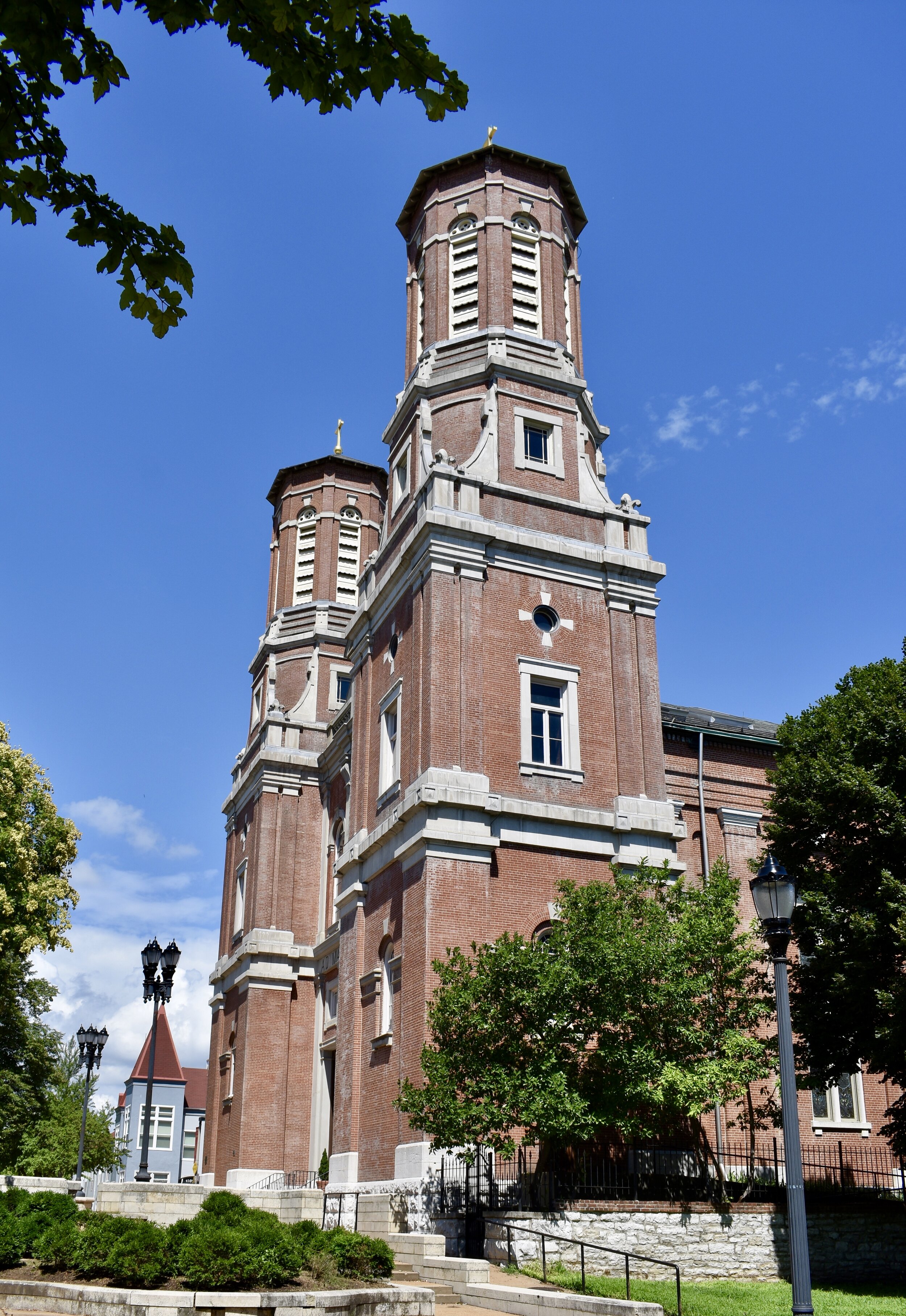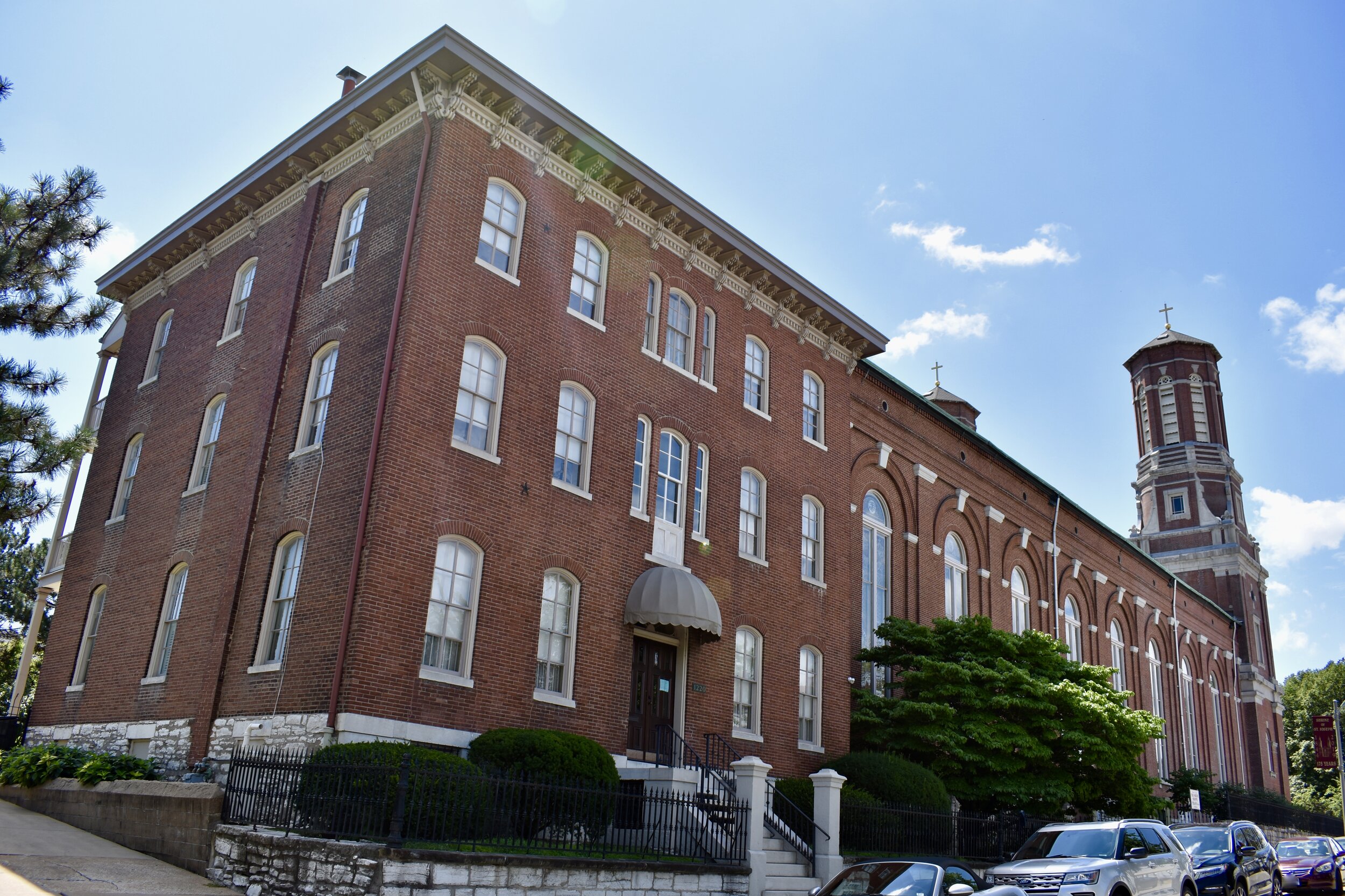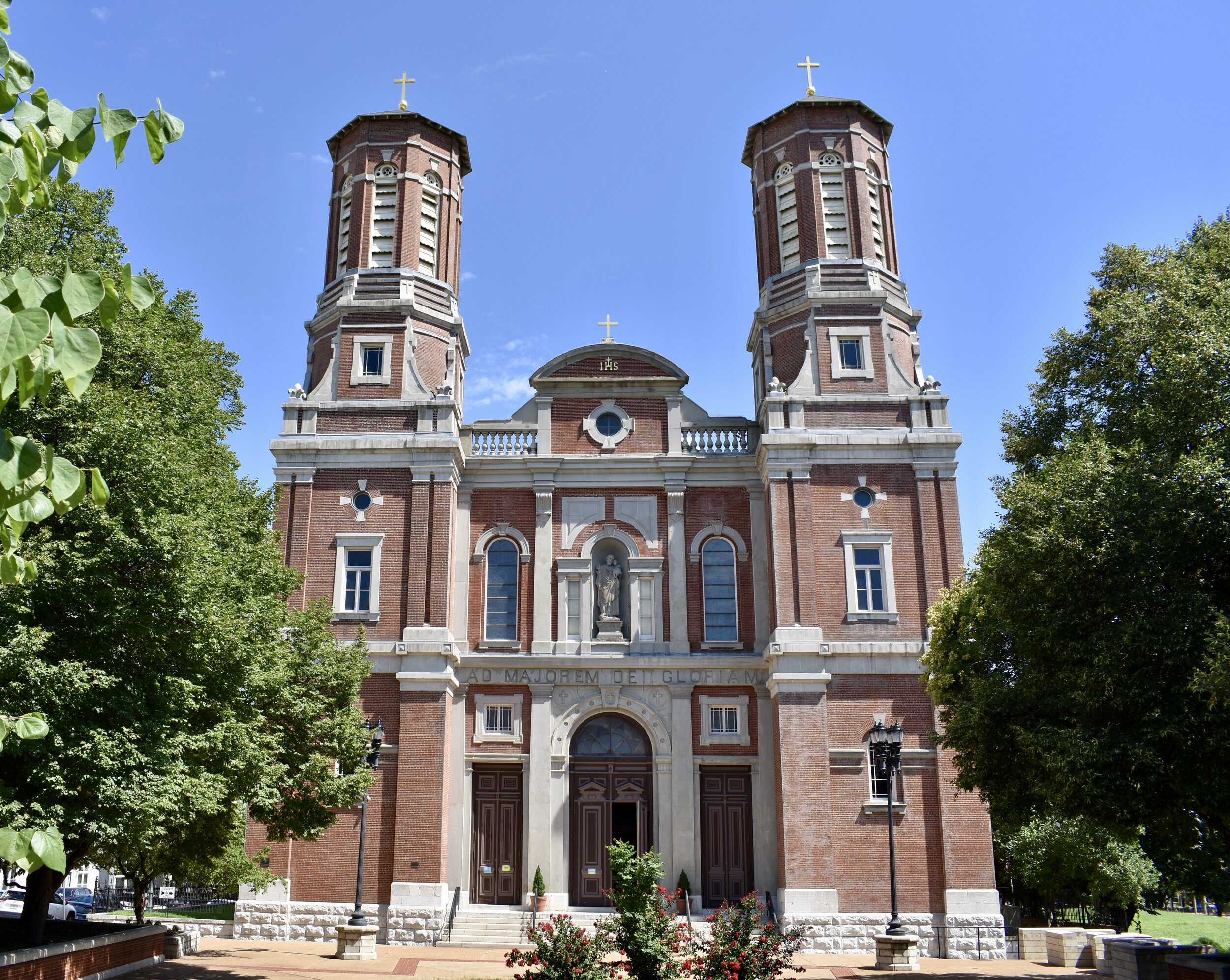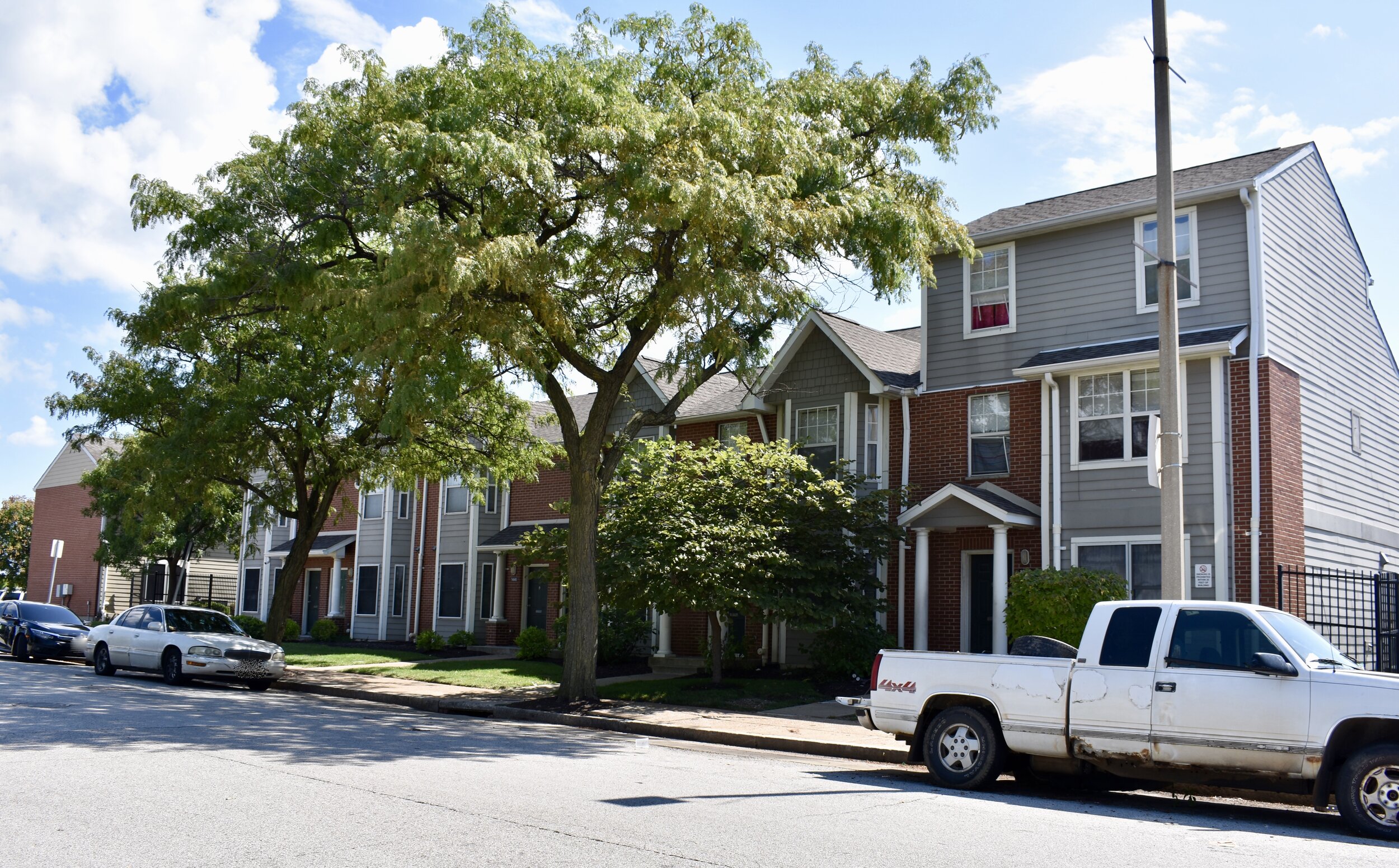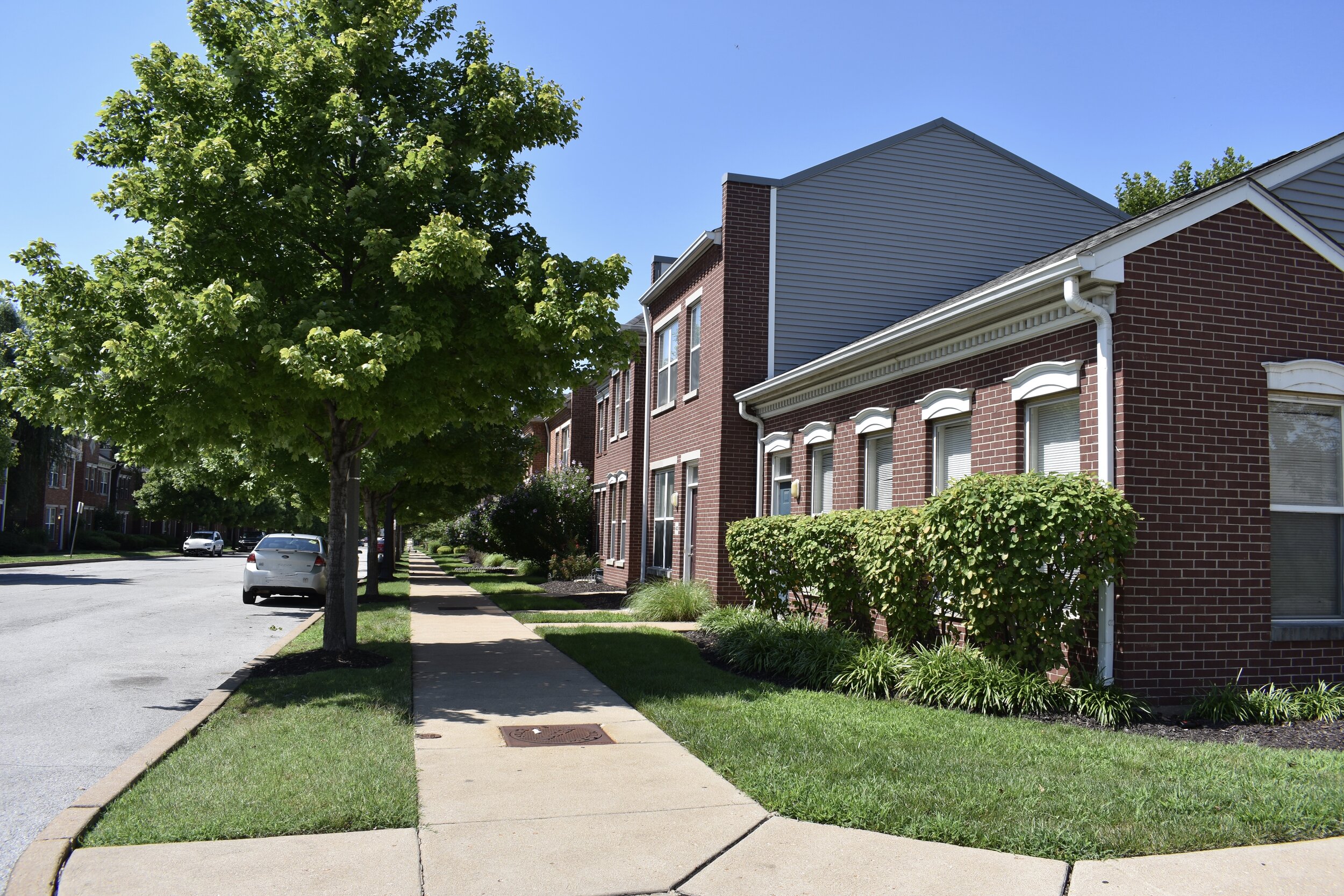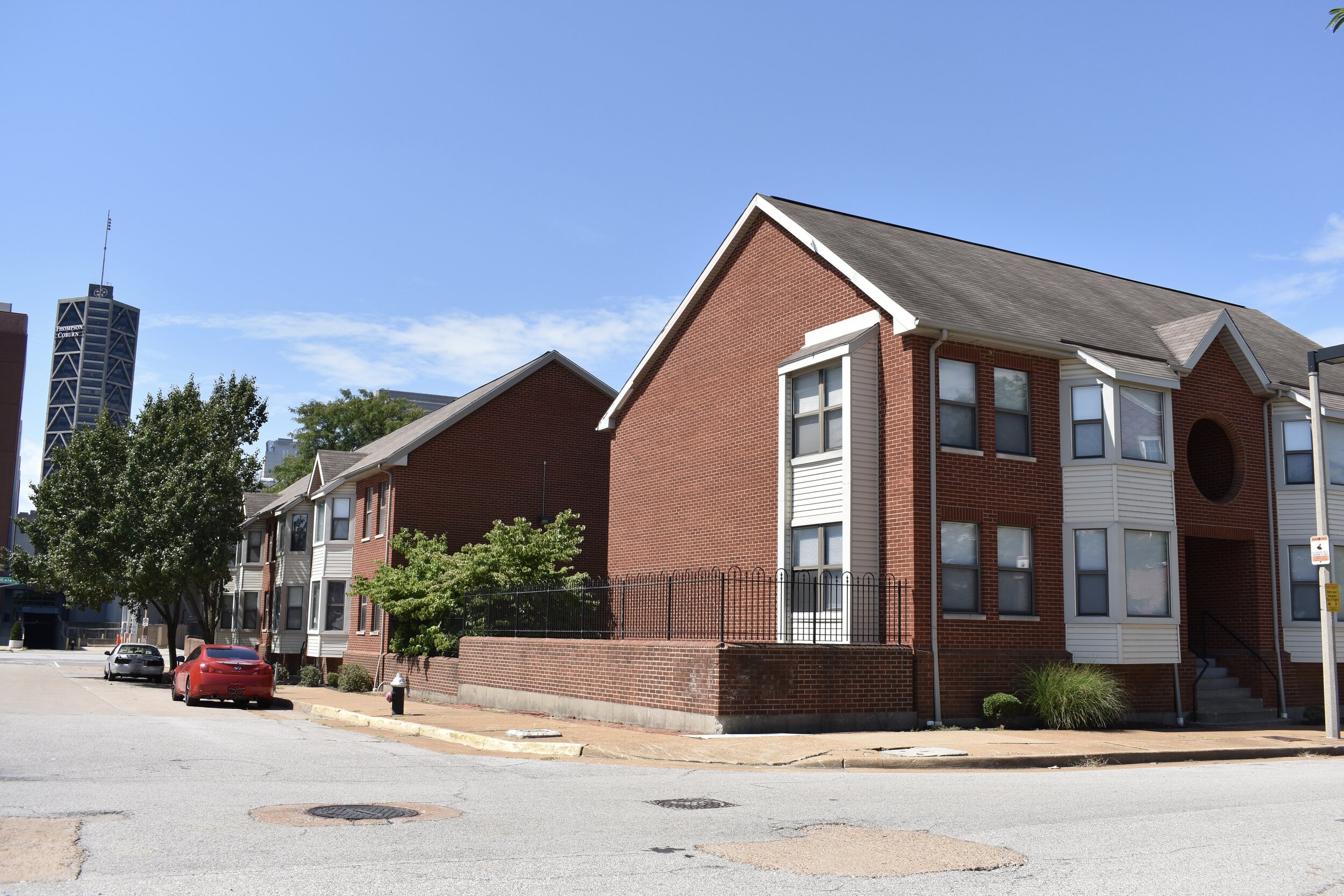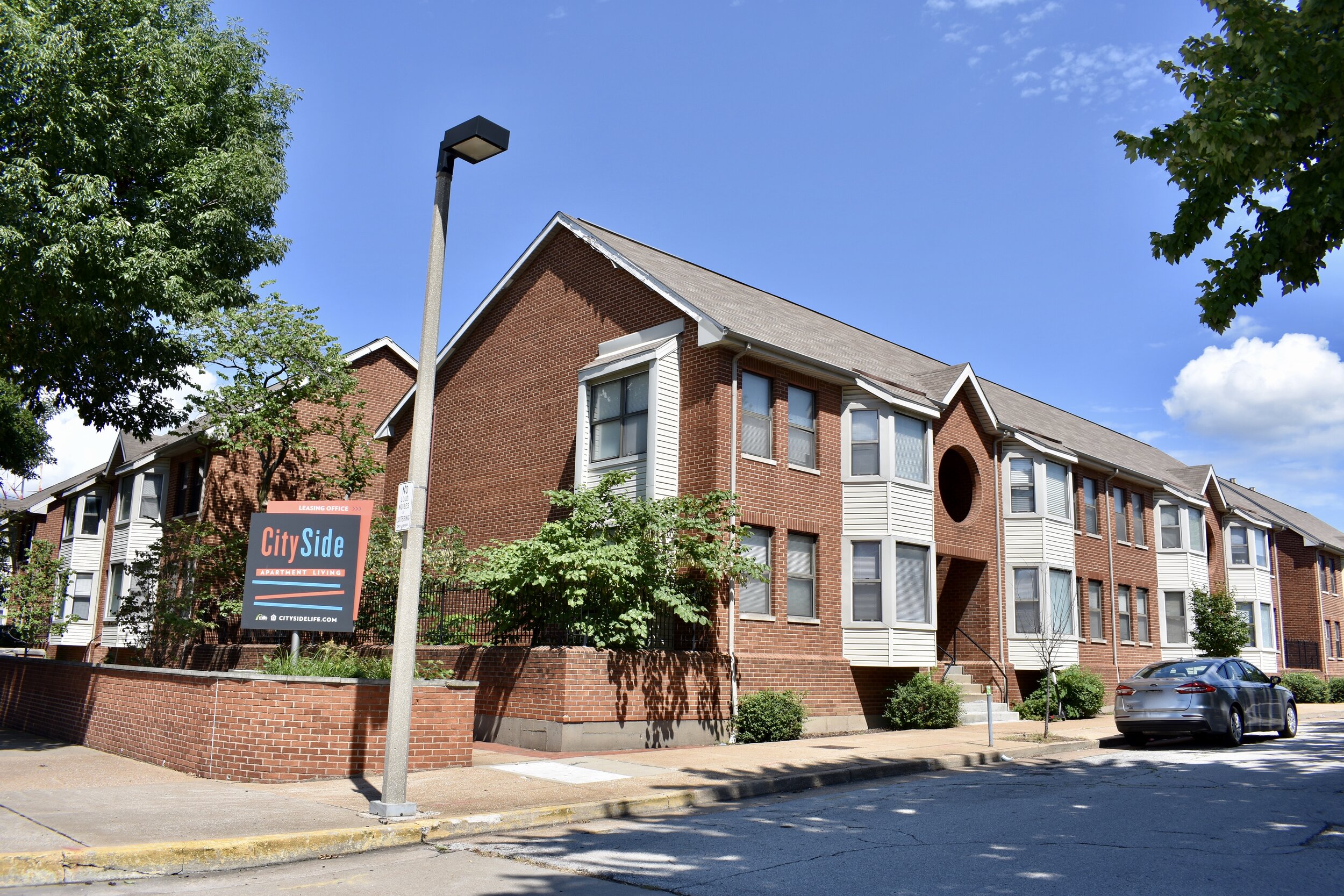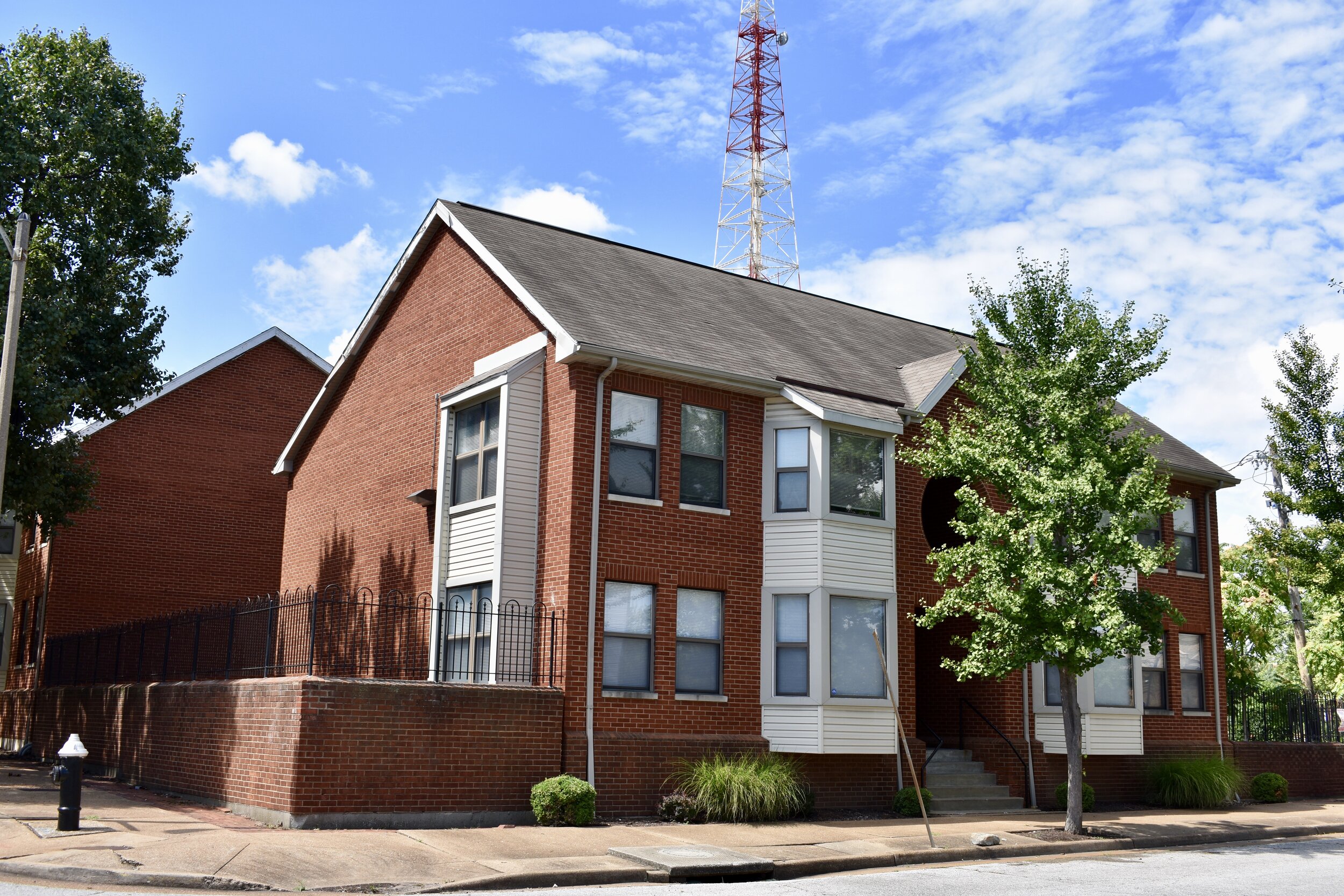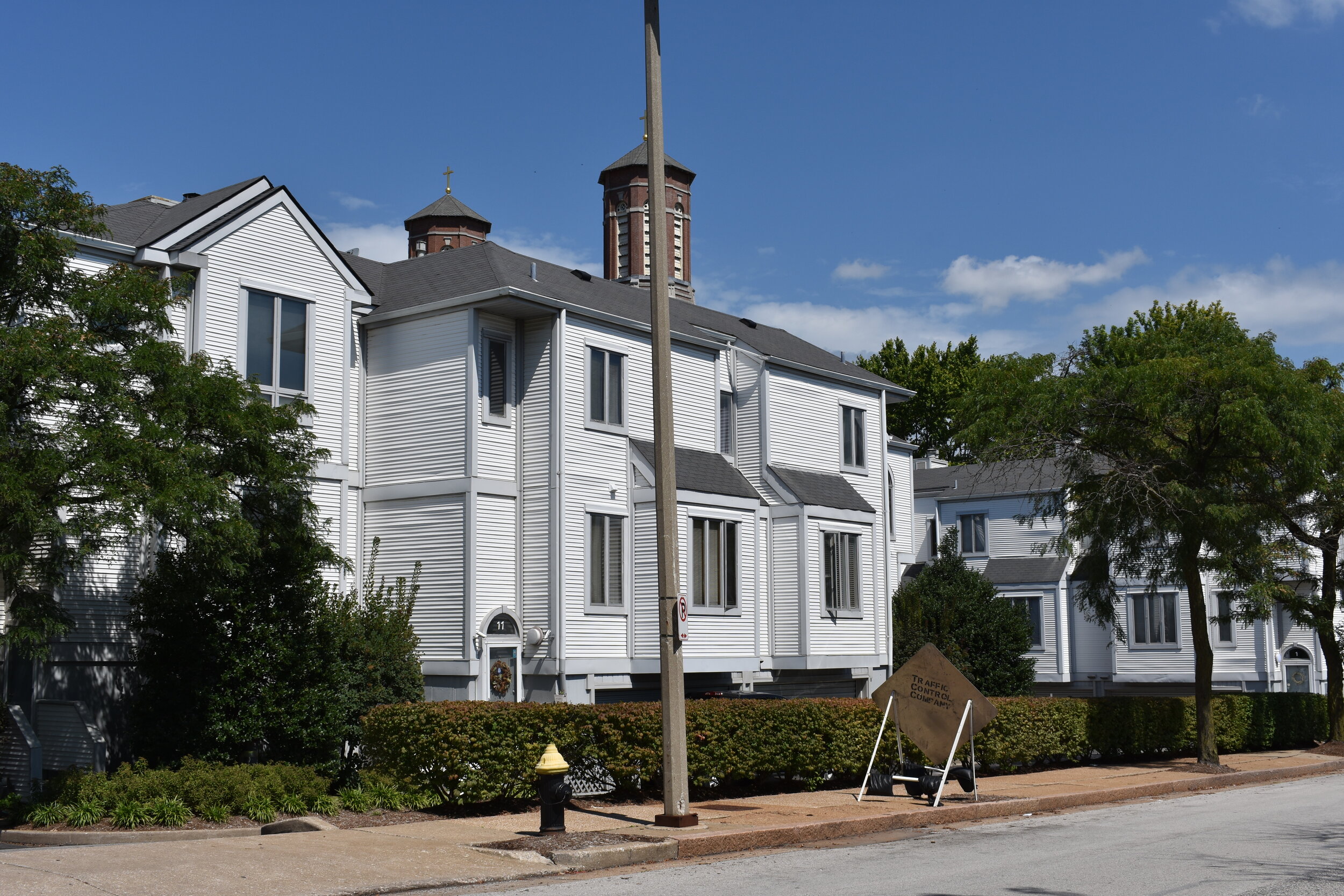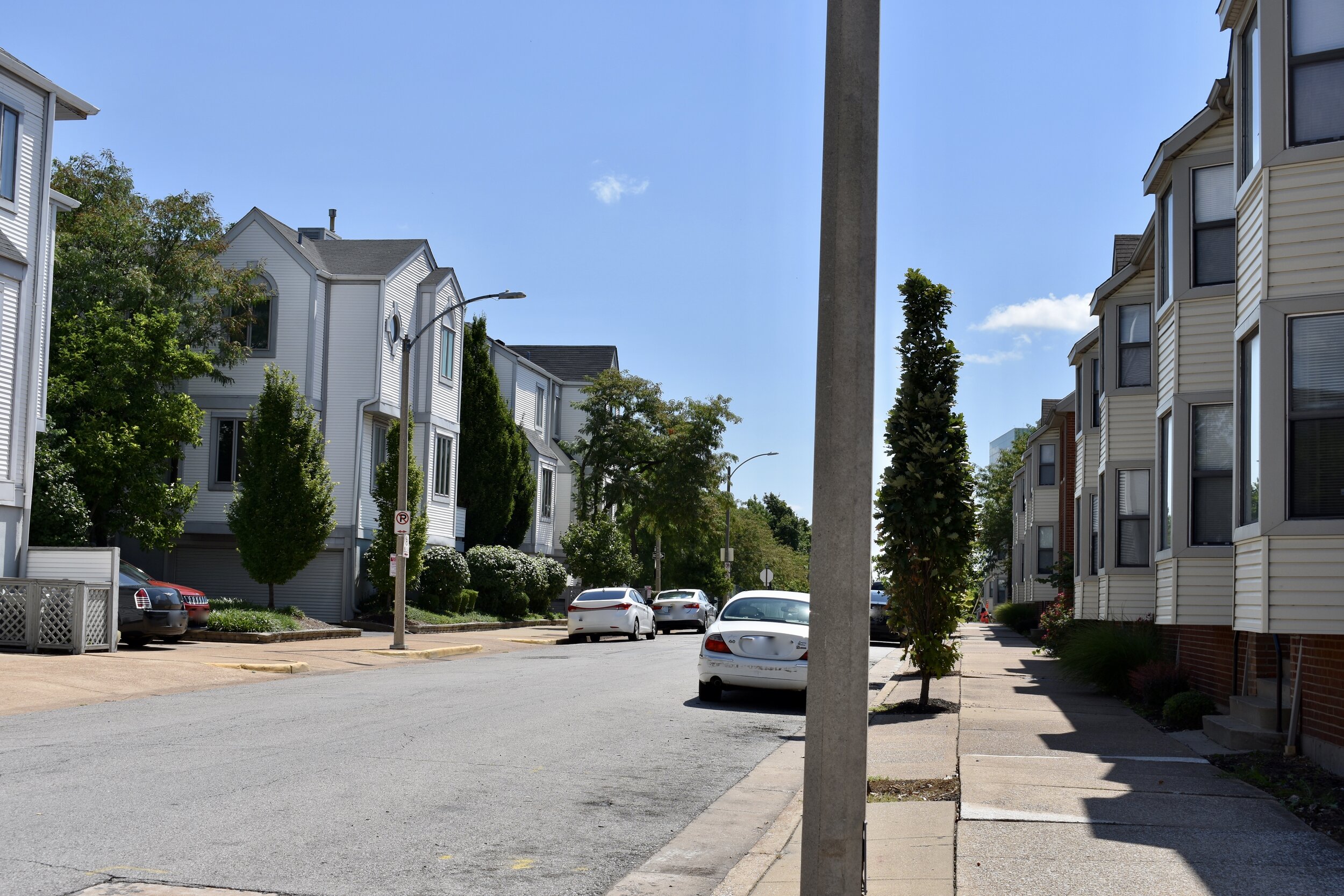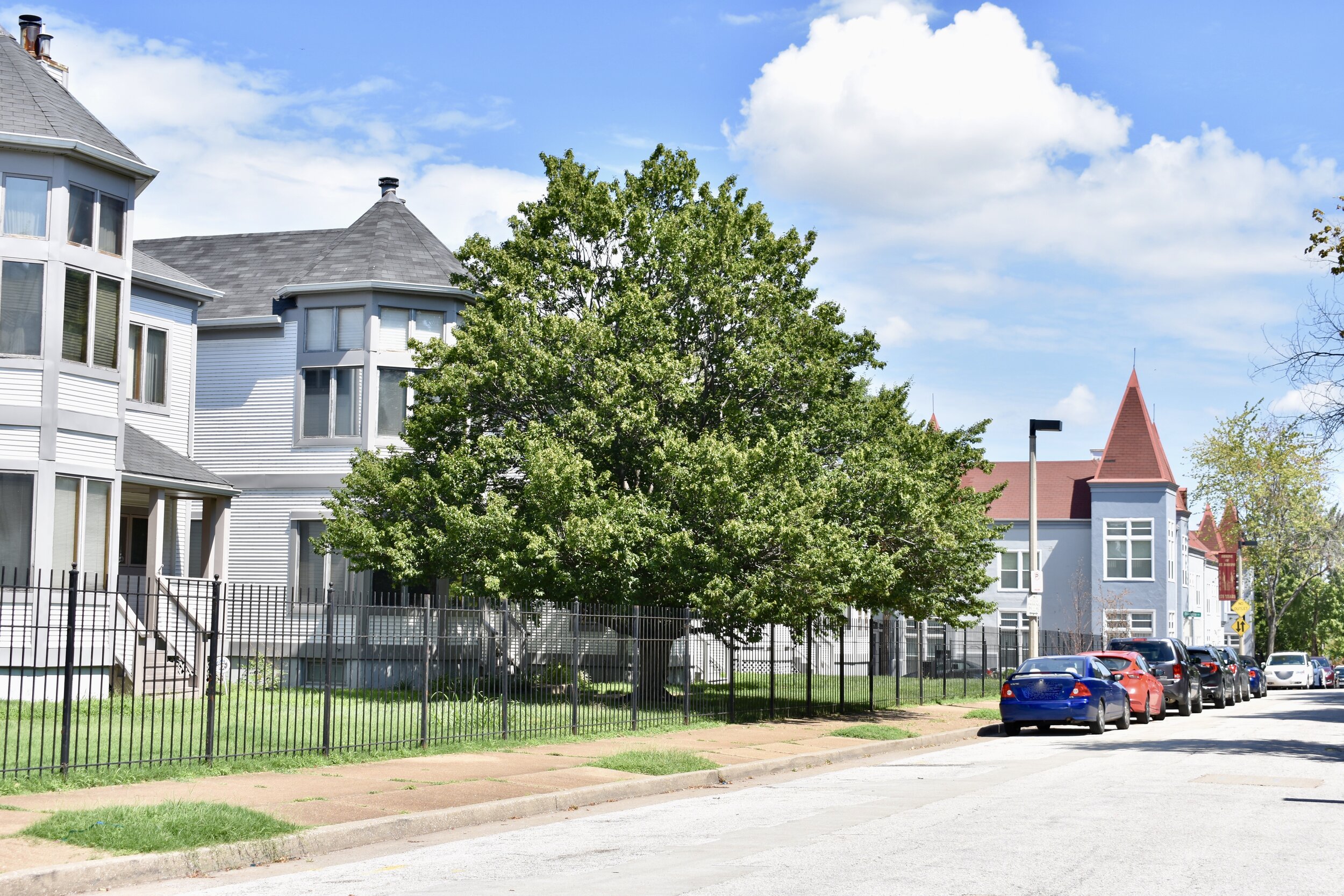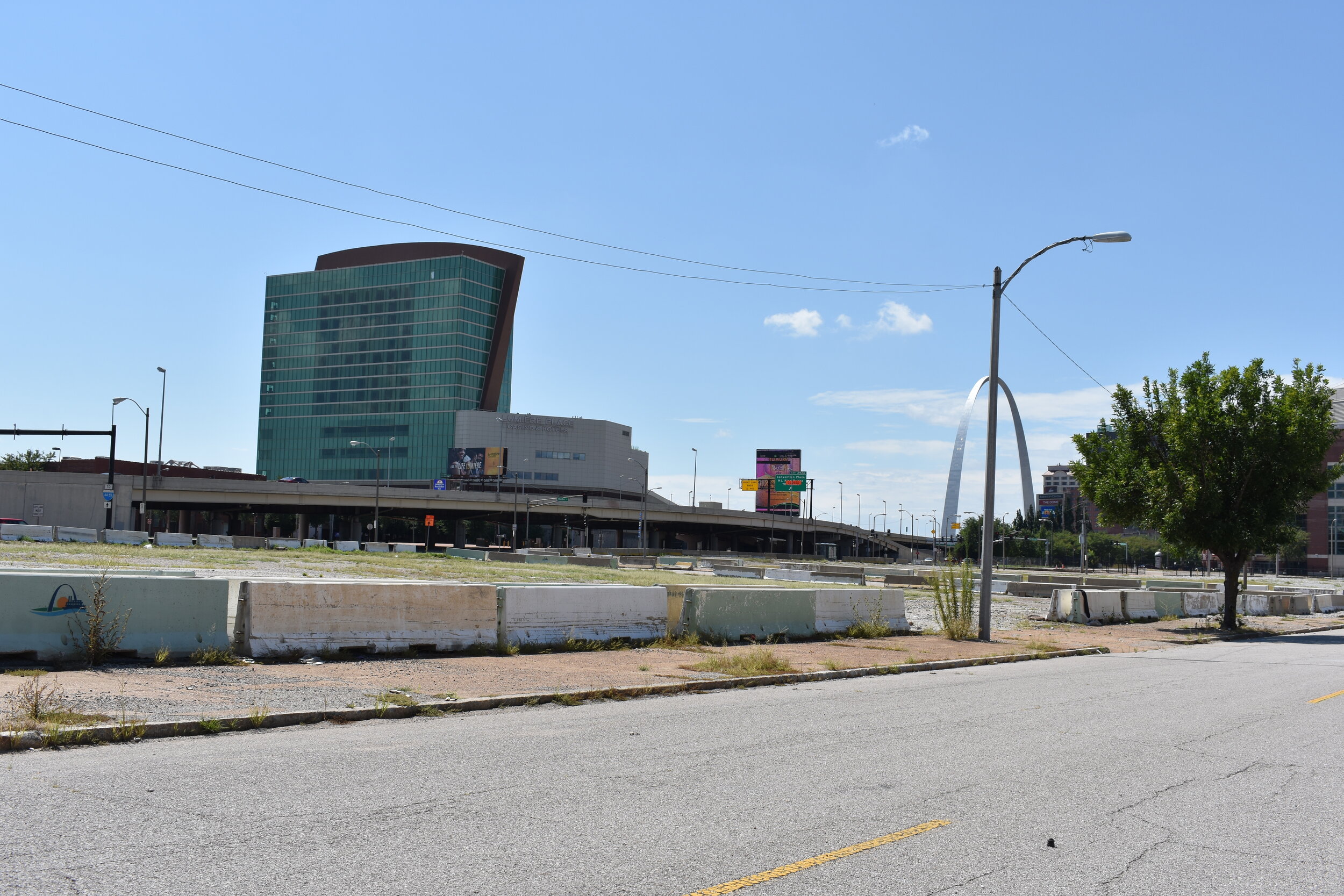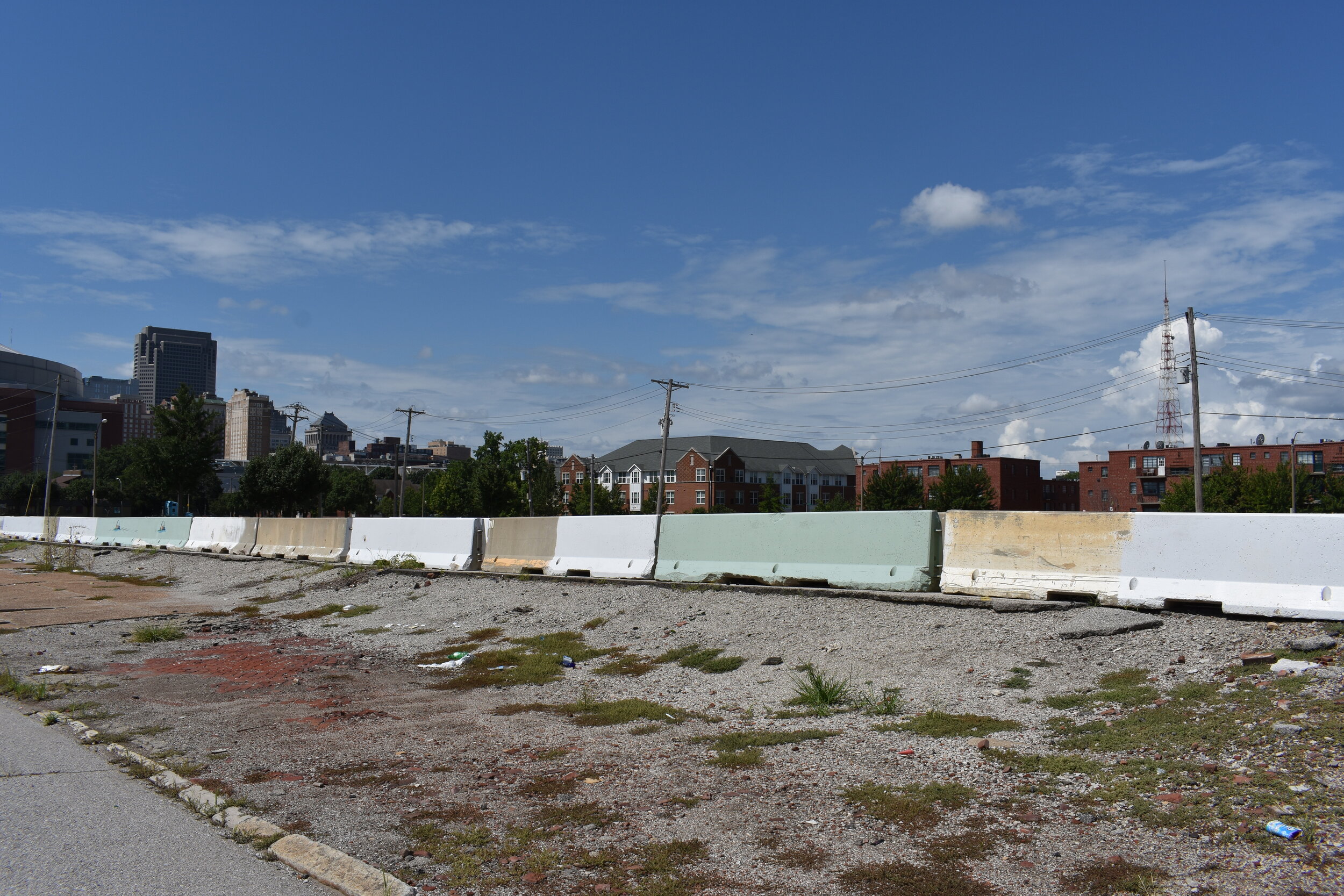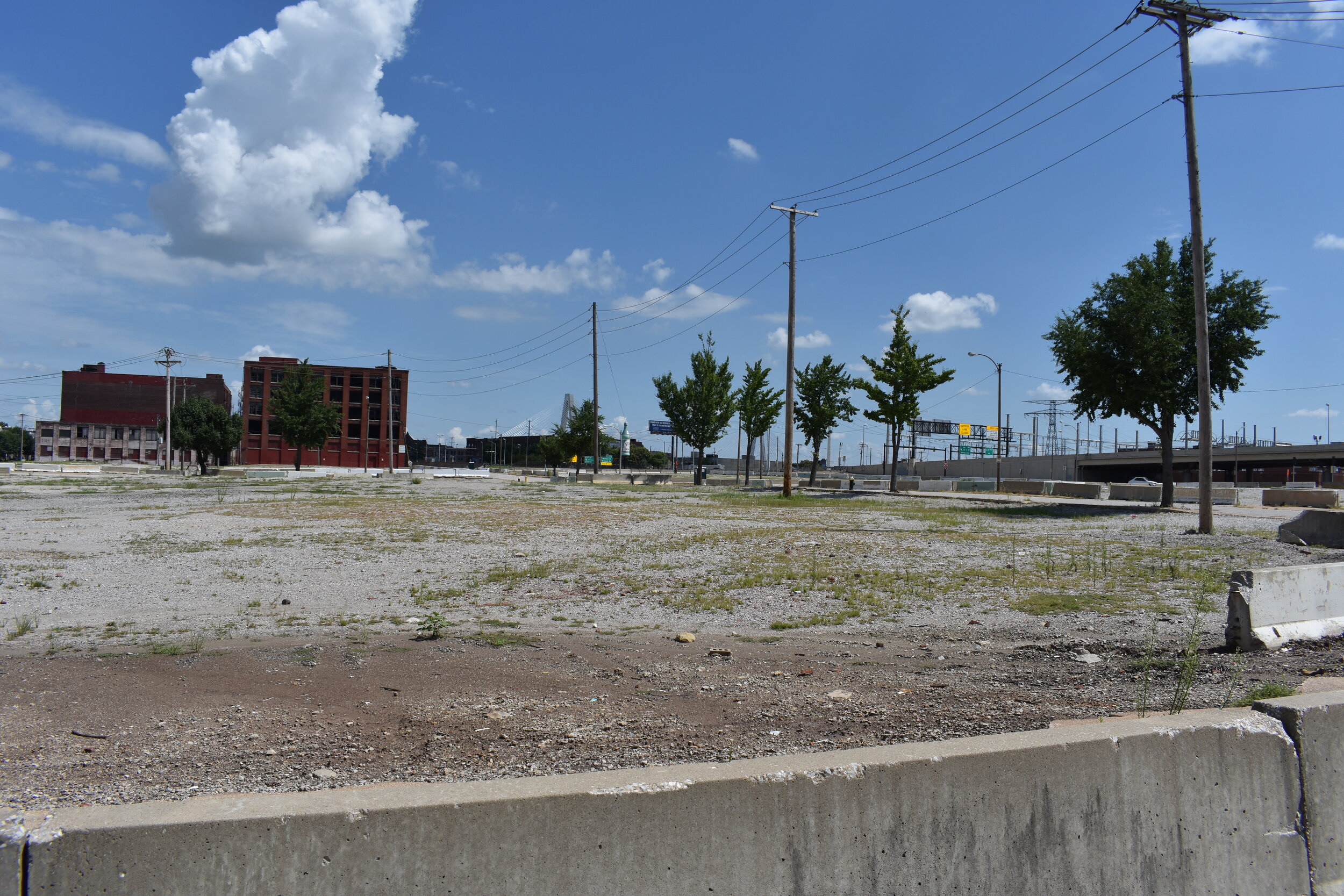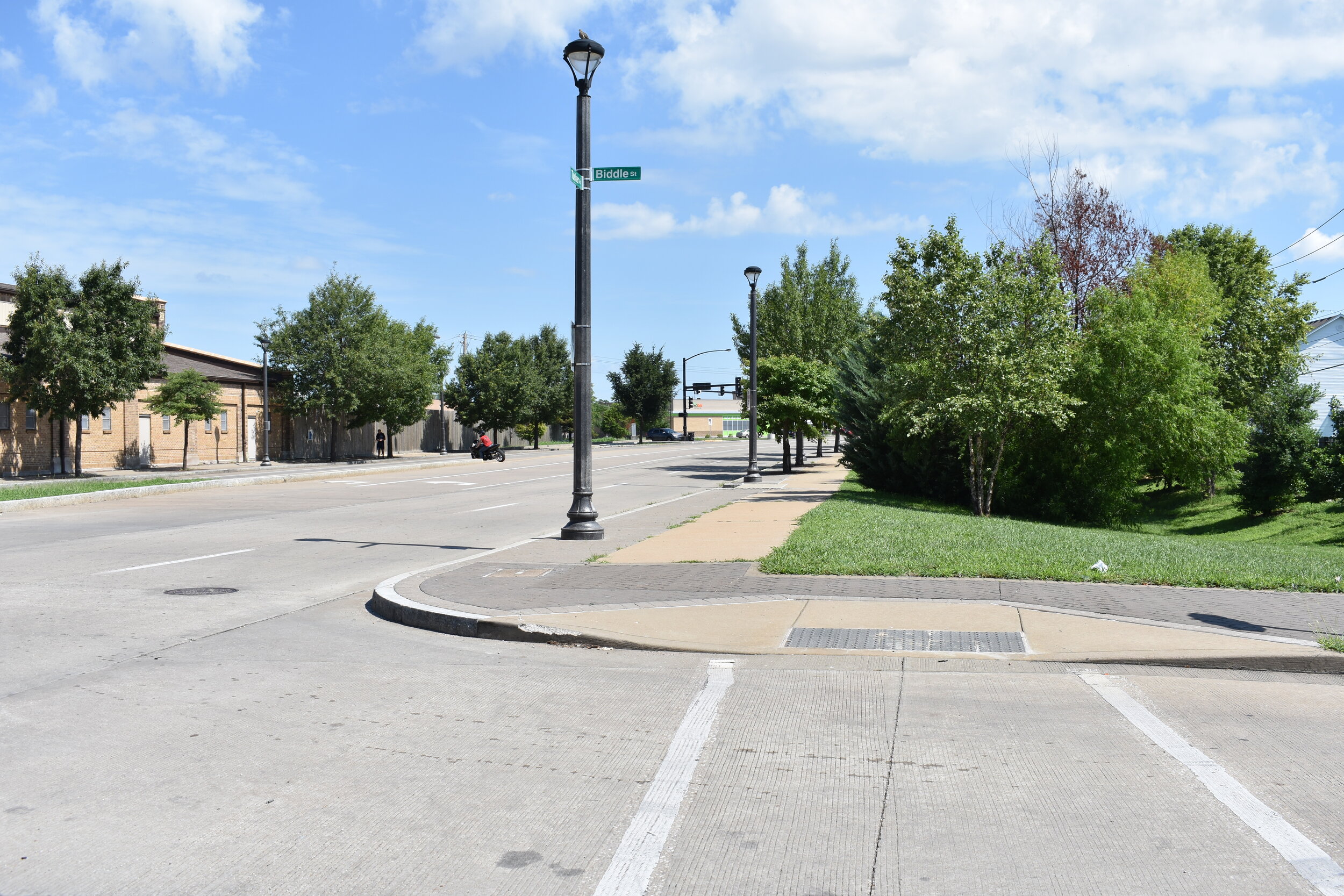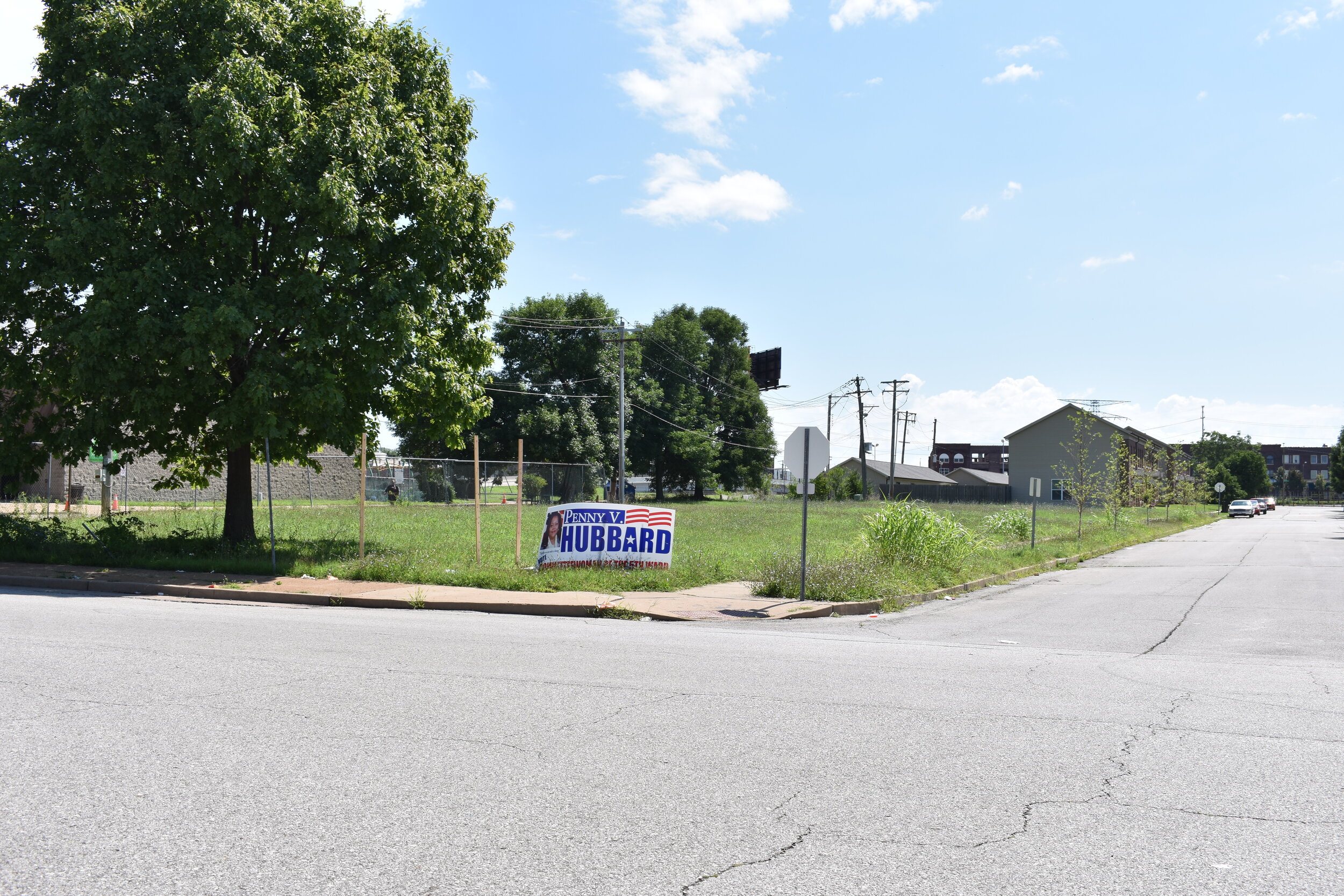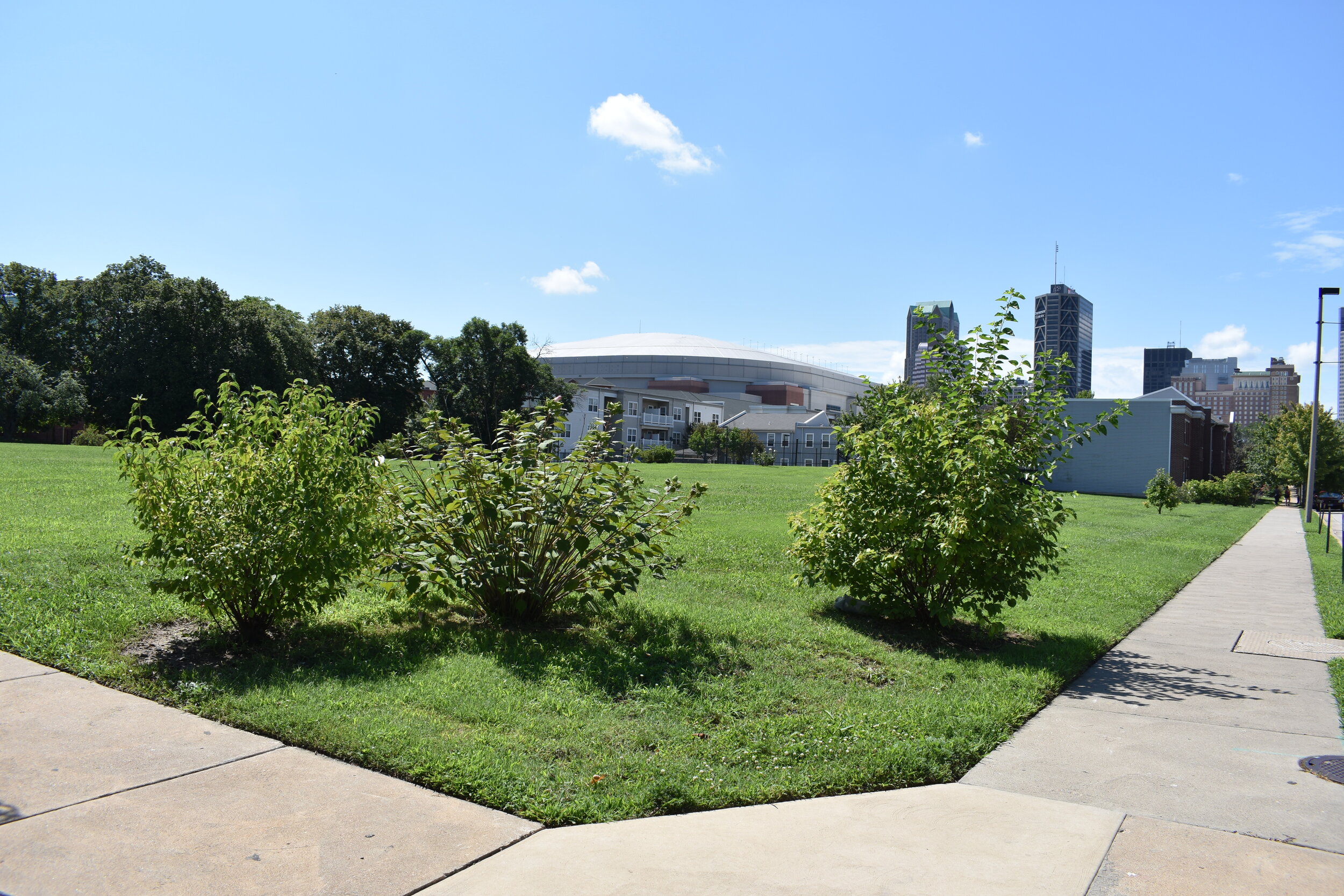Columbus Square, a St. Louis neighborhood just north of Downtown, is bound by Cole street to the south, Cass Avenue to the north, N. Tucker/13th Street to the west and N. Broadway/I-70/!-44 to the east:
The 2000 census data counted 1,949 residents, a 17% decline from the 1990 count. 92% of Columbus Square residents are black, 6% white, 1% Hispanic/Latino. 1,236 housing units were counted of which 63% are occupied 7% by owners, 93% by renters. 2000-2010 census data showed another decline of ~4% (changed from 10% to 4% 2/24/13) with a fairly unchanged racial breakdown of 93% black, 4% white, 1% Asian and 1% Hispanic/Latino.
The neighborhood website is pretty strong, with lots of good info:
Columbus Square was settled by successive waves of immigrants. The first wave, a group of German Catholics, settled in the vicinity of 11th and Biddle Streets. Later, the first Irish immigrants colonized the land around 6th and Biddle, an area that subsequently became St. Patrick's parish. After 1840, the area from the river west to 12th Street was built up with high-density tenement quarters, row houses of two and three stories high, for the newly arriving immigrant laborers. Many of these structures fell before the wave of commercial and industrial development that began after the Civil War. Regardless, of those that remained, most had deteriorated into decrepit, overcrowded slums as early as 1870.
These tenement communities tightly built around roads and alleyways became known for their poor living conditions and crime, with nicknames such as "Castle Thunder," "Crabber Alley," and "Wild Cat Chute." An Italian community began to emerge near 7th and Carr Streets after the turn of the century. By 1920 the whole area north and west of downtown assumed a polyglot character of mixed nationalities, including immigrants from Russia and the Balkan countries. During the same period, in the portion that we now call Columbus Square, truck terminals and industries replaced many of these tenement homes. Housing staged a comeback in the area with the erection of the Neighborhood Gardens apartments in 1936 and Cochran Gardens public housing in 1952. Later projects included the Columbus Square Townhomes and the Castles. Both projects were constructed between 1985-1987.
With the renaissance of downtown St. Louis in full swing, the future of Columbus Square is brighter than ever. The restoration of the historic Shrine of St. Joseph has created a renewed awareness of the neighborhood's centerpiece. Additionally, as one of the most anticipated projects in the entire St. Louis region, the Bottle District is poised to redefine the future of Columbus Square.
Wow, that was an excellent summary. Yet, no mention of the transition of the polyglot character of the neighborhood to the now uni-culture that is nearly 100% African-American. It would be good to see some racially diverse neighborhoods in north St. Louis in years to come. Almost across the board, the current day stats indicate that the north city neighborhoods have very little to no racial diversity to speak of.
Anyhow, this neighborhood is unique in that it's current housing stock was almost entirely built up in the 1980's. There are some older relics, but most of the apartments, condos and townhomes were built the last 30 or so years. Here's the city's rundown of the various developments within the neighborhood. It's always strange to me that each of these developments need to be branded like it's something special: the Castles, Courtyards at Cityside, Cambridge Heights....very strange. Is that supposed to evoke some kind of exclusivity? I don't get it.
An exception to the 1980's buildings is Cochran Gardens, the last remaining 1950's era federally funded public housing high rise. There are some excellent photos and background of this complex here and here.
And here's what it looks like today:

Another of the older developments is the Neighborhood Gardens section built in 1935:

The other developments are vintage 1980's stock.



^The Columbus Square Townhouses

^The Castles development.





These are generally uninspired modern housing complexes, but they at least don't have the typical suburban trappings of huge street setbacks, attached multi-car garages and large front lawns.




Are these structures built to last? I guess only time will tell. Maybe I'm too short sighted, but I just don't see these buildings ever being worthy of preservation through the historic registry. These kind of places seem like ones that get bulldozed every 40 or 50 years for something newer.
Regarding the business landscape in Columbus Square: there are very few businesses here that are not fast food joints (Domino's, McDonalds, Chinese food). There was a Schnucks that served the area, but it closed in 2000. The abandoned Schnucks property has an ENORMOUS surface parking lot at 10th and Cass. As per the link, it seems this parking lot was home to lots of illicit activities. I didn't see any homeless on this property today and it was actually fairly clear of debris, etc; but, there is a homeless tent city on the rail road property between the Schnucks and the Cass National Bank and Trust.


Cass National Bank and Trust operated from 1926-1970.
I believe this portion of Columbus Square is within the phase B boundaries of the McKee NorthSide plan; see the circled area in the map below:

This area of Columbus Square is arguably the ugliest with the fast food joints along Tucker and the abandoned Schnucks property, I think this area could use some love. And hopefully the NorthSide development would be a major improvement over what is there today.
There are some great views of Downtown from Columbus Square:


There are some older warehouses and reminders of an industrialized America:




Part of Columbus Square is in the plans for the stalled/moth balled Bottle District entertainment development.


Another familiar sight in Columbus Square is the huge ABC channel 30 tower which can be seen from many parts of the city, especially heading over the river from the east side:

There are also some older handsome structures including the city health department's rat and mosquito control division:


They must be doing a pretty good job on the rat front, as I've only seen rats on a handful of occasions in my nearly 20 years living here.
And arguably the most significant structures in the neighborhood, the Shrine of St. Joseph and the Patrick Henry Downtown Academy:






As I mentioned above, there aren't many non-fast food businesses, but there are a couple exceptions:


Frankly, this is not a neighborhood that overly inspires me, nor one I would take someone from out of town to showcase the city. I'm just not into 1980's architecture. However, if you are interested in the history of public housing and government subsidized housing, check out Columbus Square. It has a long history of being home to slums and crime; but, it's a long way from a slum today. Maybe Columbus Square will actually be a nice doorstep for north city and the site of more positivity and investment for the near north side in the coming years.
***In August, 2020 I revisited the neighborhood and the following includes updated commentary and photos.***
Misses On Original Tour
There are two city parks in the neighborhood, I linked to both in the additional reading section below.
Kram Fish (which is awesome) is not technically in Columbus Square, nor is the Biddle House (former St. Louis City Pest Control building). I didn’t have my method perfected back then to stay within neighborhood boundaries.
I undersold just how stunningly beautiful the 1844 Shrine of St. Joseph church is and how it centers the neighborhood. It was founded by Austrian Jesuits was the site of a Vatican-confirmed miracle in 1864. You have to see it in person to really take in just how good it looks and how the 1980s homes actually hug the sidewalks and frame the 19th Century church quite well.
Columbus Square’s William B. Ittner designed Patrick Henry School is a gem. I didn’t miss it, but here’s a better photo:
Not sure how I missed one of the best examples of Mid-Century-Modern churches. It has seen better days, but on my visit, it appears there are new folks breathing life into it. I couldn’t stop and chat because they were busy carrying stuff in and out.
Noticeable Changes
The last Cochran Gardens high rise public housing tower is now gone. The former Schnucks is now gone. The mid-20th Century public housing ideals of the time really did a number on St. Louis’ street grid. Sure, this was slum clearance, but the sprawling campus like strategy didn’t work either.
Columbus Square Circa 1953 - Photo Source - Missouri Historical Society
What we have today is much, much better. On this return visit I walked away with a great vibe. The mix of homes all have a great relationship with the sidewalk, have protected parking on the interiors and the street trees have matured making it shaded and cozy. The apartments are well maintained and the area is clear. Dang it, I liked it. The various styles ranging from the 1930s to current times actually blend nicely. 1980s are the prevalent style. My favorite being the white Columbus Square apartments that remind me of architecture in Michigan or Southern California beach towns.
I’ve tried to categorize the developments into the various styles you’ll see in Columbus Square today. Notice how the buildings hug the sidewalks, how the parking is hidden in the interior and how the street trees make nice, walkable sidewalks.
^Trees likely cut down to accommodate church parking at Shrine of St. Joseph.
1935 Neighborhood Gardens/Collins Terrace Apartments
Square recently purchased the former St. Louis Post-Dispatch building just across Cole Street from Columbus Square. They were renovating a portion of the building on my visit; the potential job increase could make Columbus Square and other surrounding neighborhoods highly desirable to live and walk to work.
The former McGuire warehouse and industrial buildings have fallen further into neglect and abandonment and are now a homeless camp.
The former surface parking/tailgating areas for the Rams are completely barren and unused. It is a massive eyesore that looks like the surface of the moon just north of our central business and entertainment district.
The Bottle District and just about everything Paul McKee (suburban slumlord) owns has devolved into a total mess. There is a new massive gas station. At least it has solar panels. And a grocery store in adjacent Carr Square Neighborhood, but nothing else.
The improvements made to Tucker are decent even if it far too wide, still.
The interior neighborhood pedestrian infrastructure includes curb bump outs and plenty of street trees and nice sidewalks. The connectivity to Downtown couldn’t be better. Strangely enough, there doesn’t seem to be an increase of traffic now that the Stan Musial Bridge drops off traffic from I-70 onto Tucker.
The landscaping and care of the apartments is impressive and looks great.
What Are The Future Needs?
There are acres of deadspace. The former surface parking lots around America’s Center, cleared fields of weeds/grass from the former Schnucks and former homes sit in idle wait for development. What opportunity we have here. Sack suburbanite grifter Paul McKee and get on with development. This part of St. Louis is ripe for positive change.
Here are just a couple examples of the sheer amount of space available for housing and mixed uses.
Additional St. Louis City Talk Reading


